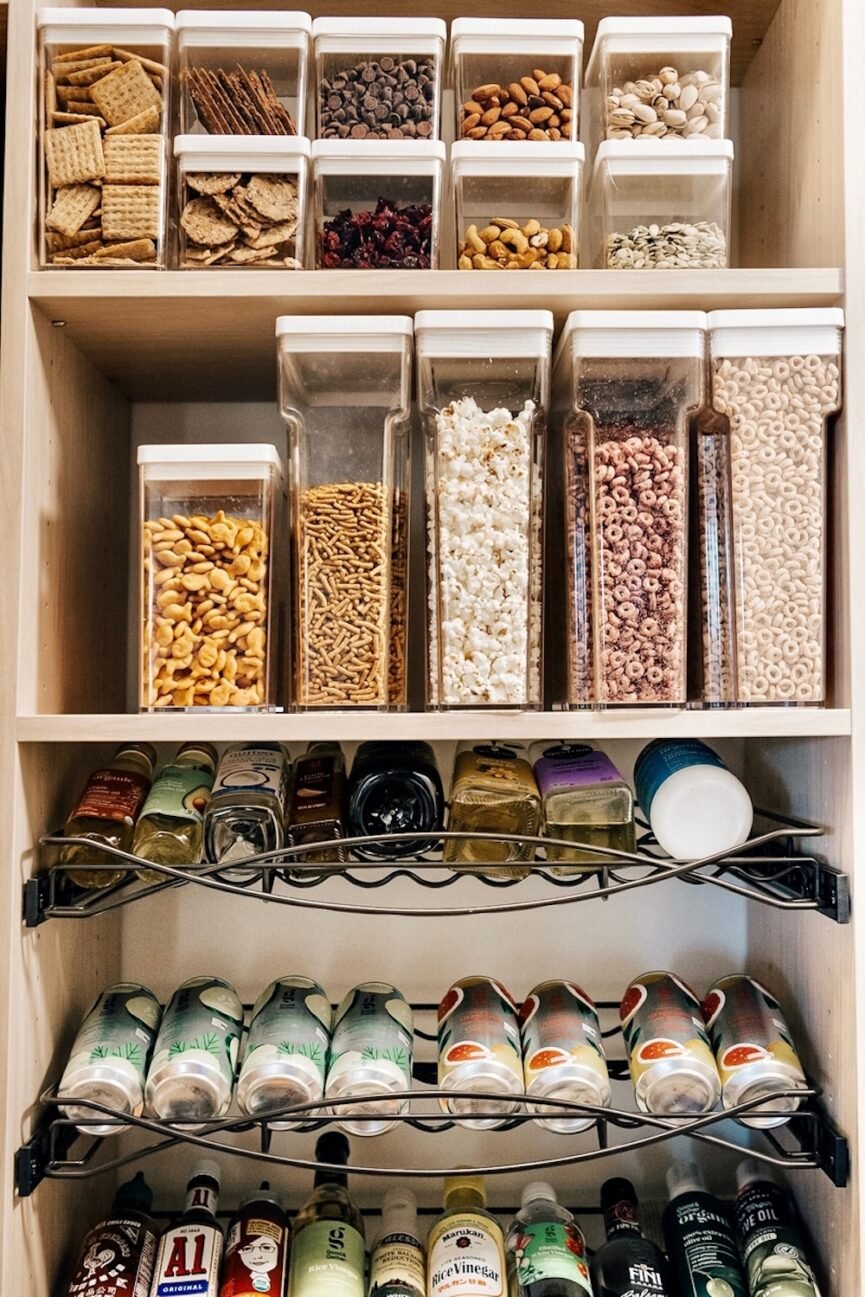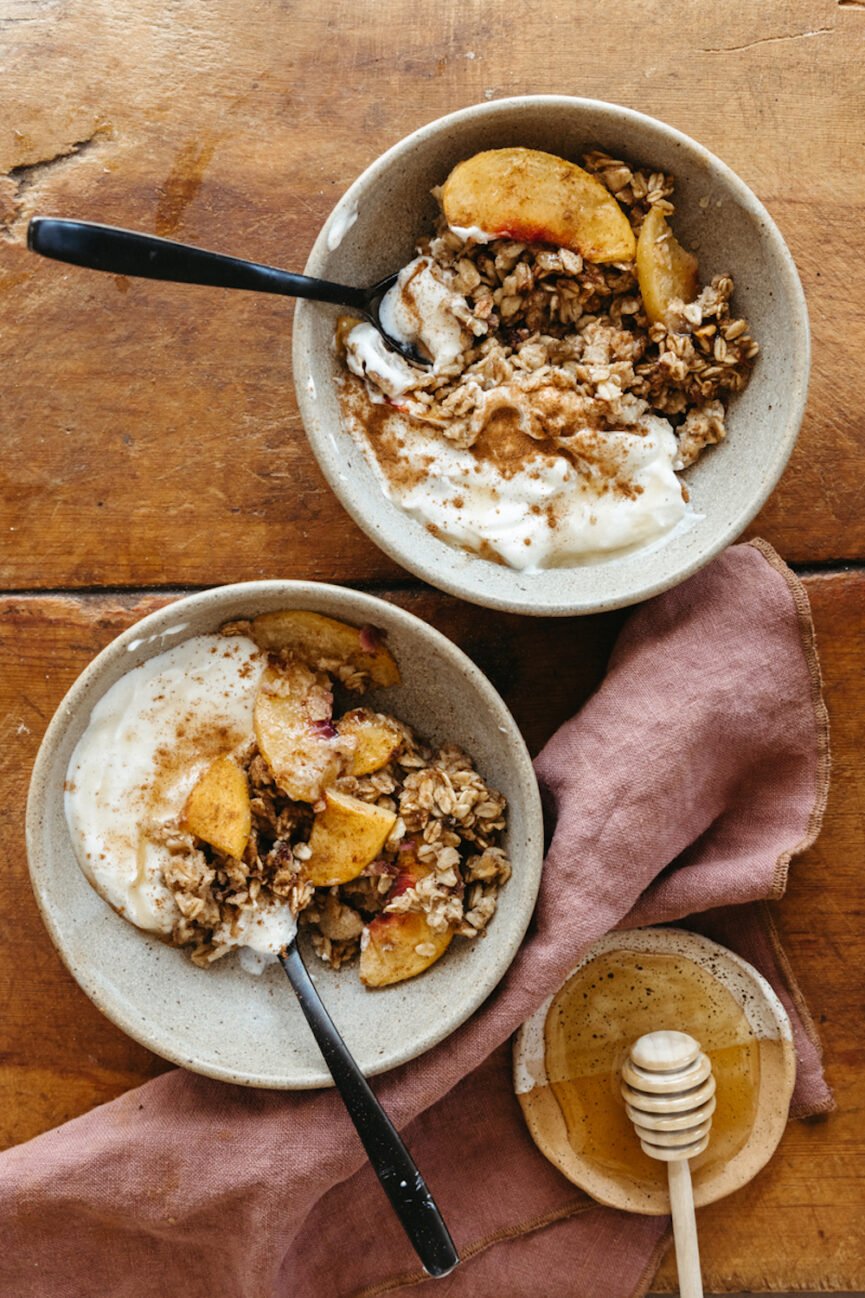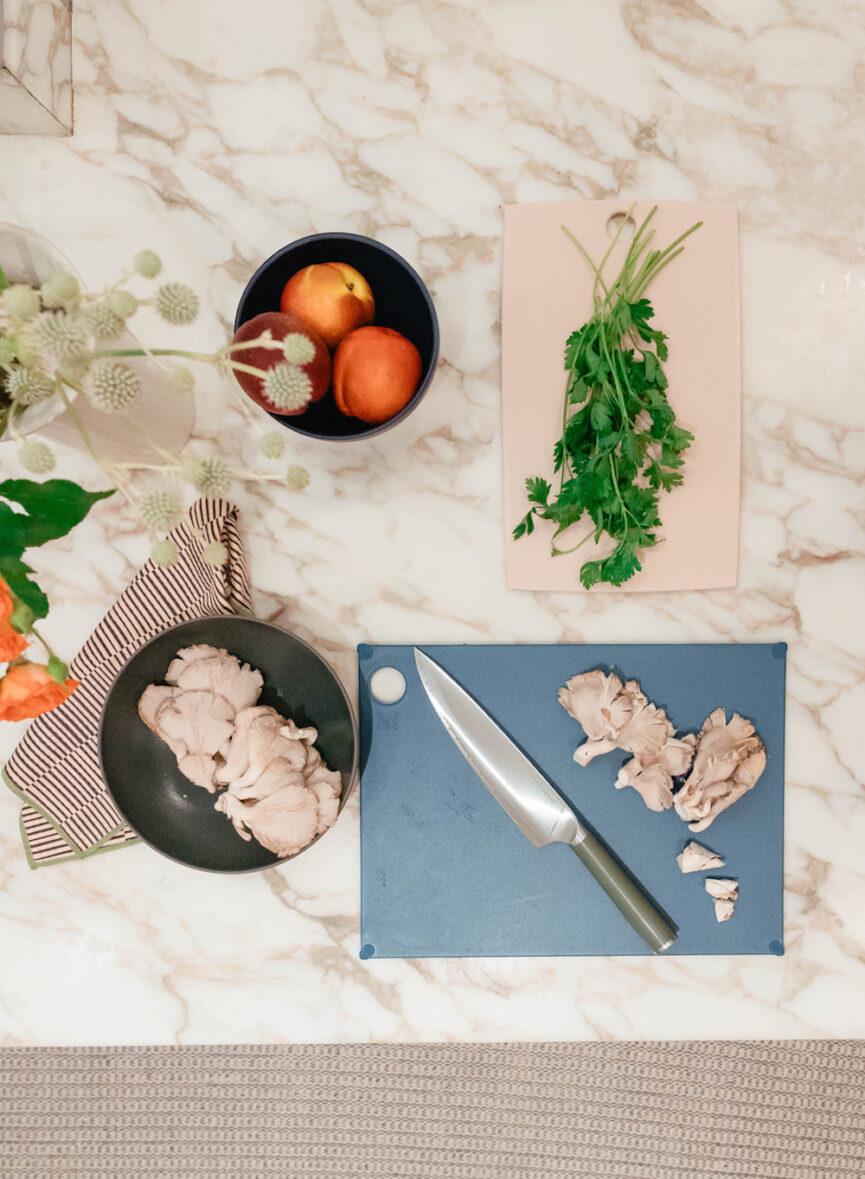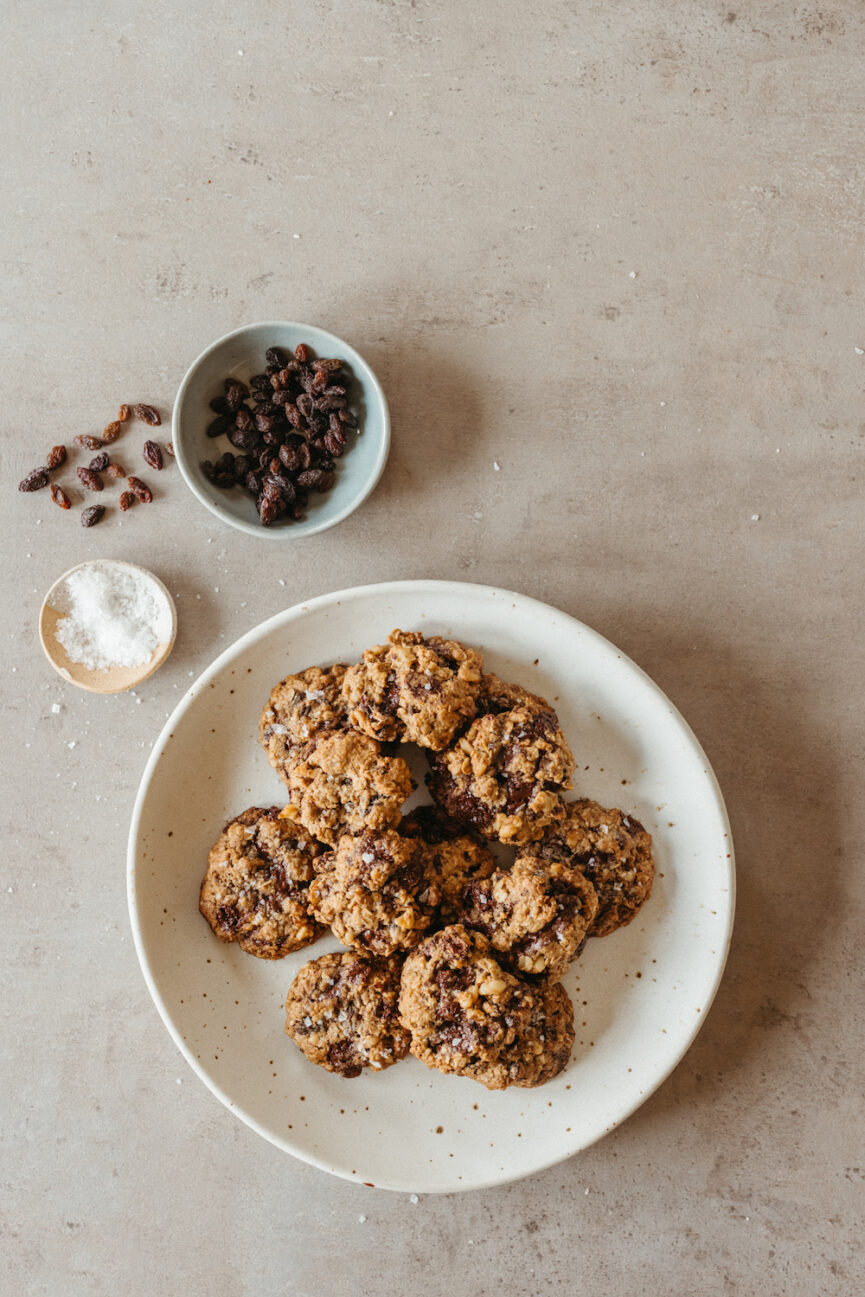In my book, efficient cooking reigns supreme. Life is full, after all. When I’m not at my keyboard—or tending to everyday household tasks—I’d rather be lightening my mental load. But as a mother and entrepreneur, what’s the secret sauce? Say hello to healthy pantry staples. That’s right. Whether you live solo or have multiple mouths to feed, a well-stocked pantry is the gift that keeps on giving. It’s time to add more nutrients to your meals (and do it with ease). This guide has it all: a Nutrition Consultant’s must-have pantry staples, how to make balanced meals with a busy schedule, and recipe inspo that won’t break the bank.

Two Pieces of the Puzzle
It’s a few hours before dinner and the pantry calls. You rummage through an assortment of mediocre snacks, settling on stale crackers and chocolate chips. Back to your desk—or into the car—you go. Sound familiar? Most of us are no stranger to a smorgasbord of pantry items, particularly those on the verge of expiring. And while a well-organized pantry is one piece of the puzzle, knowing what to have on hand is equally important. Enter: healthy pantry staples.


Why a Well-Stocked Pantry Matters
If you want balanced (yet satisfying) dishes in a matter of minutes, don’t underestimate the power of wholesome pantry items. They’re key! These nutrient-rich staples act as building blocks for crafting nourishing, minimal-effort meals. In turn, they help foster optimal health—and not just for yourself, but for your loved ones too. Win, win. Fortunately, you can put together a well-stocked pantry and keep your budget in check.
Before You Stock Up, Take Inventory
Prior to giving your pantry a nutrition-savvy makeover, take inventory. This is two-pronged: you’ll prevent food waste (by using up existing ingredients) and you’ll identify what healthy staples you already have. In the long run, this helps save money as well as unnecessary trips to the store. In other words, by knowing exactly what’s in your pantry, you can make more informed decisions about what items you truly need to replenish. And this streamlines a sustainable approach to grocery shopping habits.


Is buying in bulk worth it?
Speaking of grocery shopping habits, let’s talk about buying food in bulk. Is it worth the hype? In many ways, this comes down to your lifestyle, needs, and storage space.
Pros
First and foremost, buying in bulk tends to work well when you’re purchasing items with an extended expiration date (think: canned soups and tea). From a financial perspective, this is cheaper. When you buy a couple tubs of peanut butter at Costco, for example, the price of the individual units are usually lower. Secondly, if you live in a household with many people, buying in bulk makes sense. You’re going to go through food faster! Lastly, buying in bulk can be better for the environment as it often reduces the energy footprint required for packaging (fewer materials are needed).
Cons
That said, bulk items inevitably take up more space. Additionally, it’s more common for these ingredients to go to waste because of the sheer amount of the product. Bottom line: look at how much you’ve spent on groceries in recent months. Compare this to a general idea of how much food you’ve had to toss or compost. Depending on your circumstances, some things might be better purchased in smaller quantities.


Tips for Eating Healthy on a Budget
Is it possible? Yes! Contrary to popular belief, it is possible to keep your grocery bill low while still fueling your family with nutrient-dense food. A little bit of planning and prepping goes a long way.
Plan your meals. Creating a weekly meal plan—based on budget-friendly recipes that utilize affordable ingredients—is key. Think: beans, legumes, whole grains, and tinned fish.
Utilize frozen produce. Opt for organic frozen fruits and vegetables (which are often cheaper than fresh) and have a longer shelf life.
Cook in batches. Prepare large batches of meals and freeze individual portions for future use to save time and money. This vegetarian bean chili is perfect for that!
Shop seasonally. Seasonal produce is typically most economical (and delicious) as opposed to buying what’s out of season.
Use coupons and discounts. Look for coupons, deals, and discounts on healthy food items. Additionally, take advantage of loyalty programs at your local grocery store. Don’t forget to sign up for their newsletter!
Choose affordable proteins. Swap expensive meats for affordable proteins, like eggs, Greek yogurt, cottage cheese, beans, and frozen edamame.
Grow what you can. If you have the space, consider growing your own produce and herbs. A small backyard or windowsill is all you need!


15 Healthy Pantry Staples
So, what does a Nutrition Consultant keep in her pantry? At any given time, you’ll find most—if not all!—of these ingredients on my shelves. These help me nourish my family in a sustainable and economical way.
- Extra-virgin olive oil. Not a day goes by without us using EVOO. It’s a versatile source of heart-healthy monounsaturated fats and antioxidants. I also keep avocado oil spray and ghee in our pantry for similar cooking methods.
- Apple cider vinegar. From helping stabilize blood sugar to keeping produce clean, ACV has earned a forever spot in our pantry. I love the tanginess of it in salad dressings. Other sauces and condiments we love? Primal Kitchen.
- Canned fish (salmon, sardines, etc). Tinned fish is a convenient source of healthy fats, calcium, and protein. Mixed with a bit of Greek yogurt, lemon juice, salt and pepper, they’re easy to zhuzh up. When looking for sustainable canned fish, check the label. Pole-and-line-caught, pole-caught, troll-caught, and FAD-free are all clean labels.
- Nutritional yeast. A vegan source of vitamin B12 and protein, nutritional yeast adds a cheesy flavor to dishes. Sub it for cheese or sprinkle it on popcorn or grain bowls.
- Whole grain (or gluten-free) pasta. For extra fiber and protein, I either have boxes of 100% whole-wheat pasta or a gluten-free alternative, like soba noodles or black bean noodles, on our shelves.
- Nuts and seeds. Rich in healthy fats and various micronutrients, everything from walnuts to pumpkin seeds makes for nutritious snacks or breakfast toppings.
- Canned tomatoes. Versatile and loaded with vitamin C, we keep cans of tomatoes for sauces, soups, and stews. Furthermore, you’ll find canned (or jarred) artichokes and olives in our pantry as well. You never know when a pizza night craving will strike.
- Bone broth. Our pantry wouldn’t be complete without broths! Be it chicken or beef bone broth or veggie broth, I always have a few for sipping or soup-ing.
- Coconut milk. Whether I’m making chia pudding, a Thai-inspired soup, or need a nondairy milk alternative for a dessert, coconut milk is used in frequent rotation.
- Oat bran. High in fiber and protein (more than traditional rolled oats), oat bran provides sustained energy and can be used many ways—i.e., my toddler’s morning oatmeal, muffins, or other baked goods.
- Beans. From black beans to Great Northern beans, we’re either using these for taco night, in chilis, or to bulk up vegetarian salads.
- Oats. High in fiber, oats provide sustained energy and can be used for oatmeal, baking, or as a topping for yogurt and smoothies.
- Beans (such as black beans, chickpeas, and lentils). Excellent sources of plant-based protein, fiber, and various vitamins and minerals. They can be added to just about everything, including veggie burgers.
- Dates. Between dates, raisins, and unsulfured apricots, we love dried fruit! They’re ideal for adding natural sweetness to smoothies, energy bites, or trail mix.
- Protein powder. Again, the uses are endless. From adding a scoop to oatmeal, yogurt, or smoothies, there’s hardly a day that goes by that we don’t consume protein powder.


How to Build a Satisfying Meal With Pantry Items
With those healthy pantry staples in mind, how can you build a delicious meal with minimal cleanup?Here’s my go-to formula.
Start with a bean, grain, or legume.
Starchy carbs are crucial for satiation and energy. Examples include quinoa, chickpeas, wild rice, farro, sweet potatoes, soba (buckwheat) noodles, or 100% whole wheat pasta. In terms of portion size, this will vary. For most, 1/2-1 cup of a grain or starch works well. To make things efficient, stock up on microwave-friendly grains or batch cook your starchy carbs ahead of time.
Add non-starchy veggies.
You’ll need to head to the fridge for this, but keep it simple. Everything from diced cucumbers to handfuls of leafy greens, chopped tomatoes, sliced bell peppers, hearts of palm, and julienned carrots count. Add as many non-starchy veggies as you’d like!
Top with protein.
The sky’s the limit. If you’re plant-based, opt for lentils, a veggie burger, edamame, or pre-cooked tempeh. Otherwise, wild-caught salmon (canned), rotisserie chicken, deli turkey, cottage cheese, or hard-boiled eggs are great options. Aim for roughly 20 grams of protein to support hormone health and aid in fullness.
Don’t forget healthy fats.
Healthy fats are crucial for balancing blood sugar, helping with the absorption of fat-soluble vitamins, and satiation. Examples include nuts, seeds, avocado, olives, cheese, tahini, pesto, and olive oil. Portion sizes will vary, but typically 2-3 tablespoons of healthy fats fits the bill.
Consider nutritional boosts.
For flavor, texture, and other nutrients, toss on hummus, salsa, tamari, coconut aminos, fresh herbs, nutritional yeast, or kimchi.


Recipe Inspo
To bring this to a close, what are a few pantry-forward recipes to keep on your radar? Discover a few of our favorites ahead.
- This tuna and avocado toast. It’s a no-frills meal that tastes like heaven on sourdough.
- For breakfast, our banana cashew baked oatmeal slays on a weekday morning (and, quite frankly, is the best kind of meal prep).
- This chickpea salad sandwich cures the midday slump.
- For a sweet treat, our healthy oatmeal cookies come together in no time. Bon appétit!





